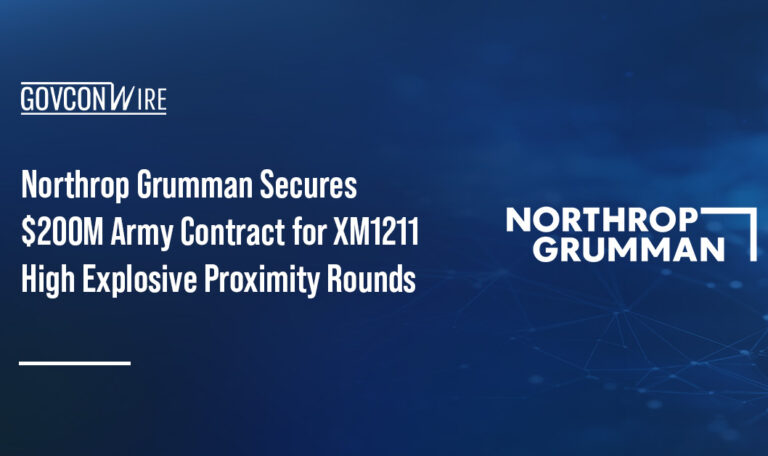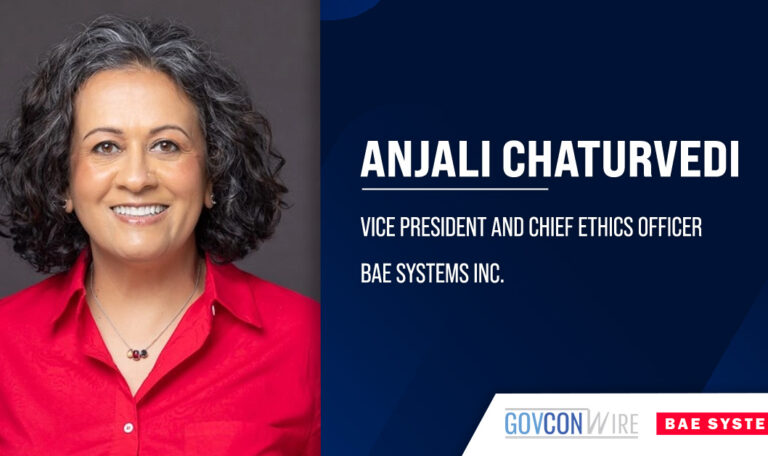The rapid growth of commercial space has unlocked exciting new opportunities for the U.S. federal government. Many of these possibilities lie in the field of geospatial intelligence, or GEOINT, and space-based imagery, especially with the recent development of 3D and 4D capabilities.
GovCon Wire spoke with six-time Wash100 Award winner Tony Frazier, executive vice president and general manager of public sector Earth intelligence for Maxar Technologies, to understand the significance of recent GEOINT advancements, find out what the future holds for space intelligence and see what’s next for Maxar as the company expands into non-Earth imaging services in 2023.
Read below for Tony Frazier’s full Executive Spotlight interview.
Geospatial intelligence, or GEOINT, has become a popular topic over the past year, especially because of the critical role GEOINT played in predicting and tracking the Russian invasion of Ukraine. Can you talk about why GEOINT is so important today?
We have the ability to provide truth from space. We help our customers see, understand and act on precise activities at global scale. With the Ukraine crisis (now conflict) with Russia, we saw the buildup of Russian troops starting in late November and early December 2021. While they said they were exercising, they clearly had bad intentions.
We saw evidence of over 100,000 troops on the border of Ukraine. In late February 2022, when the conflict initiated, we saw examples like the 40-mile convoy that showed the scale of the attack. We saw evidence of war crimes in Bucha, the impact of shelling throughout the region, as well as examples of grain being stolen by the Russians.
We collect that data and share it with the public through over 500 media partners to counter disinformation. This can also apply to operational missions because our imagery is unclassified and shareable with allies and partners throughout the region. I think that really helped demonstrate the value that commercial GEOINT can play against a near-peer competitor.
One of the biggest trends in GEOINT is the evolution from 2D imagery to 3D and even 4D imagery. Can you talk about what that means for companies like Maxar and your customers?
As we’ve increased the capabilities of sensors in space to collect data, it’s allowed us to create information products that can be applied to a broader set of missions. One of the things that makes Maxar’s constellation unique is that we’re able to collect imagery at very high spatial resolution across broad areas at high accuracy. The satellites are very agile, so they can collect imagery at different angles and then that can be processed through algorithms — artificial intelligence, machine learning — to create 3D terrain data at scale.
One of the big initiatives we’ve been focused on is how to take our 20-year image library and convert that into a 3D globe that allows our customers to not only leverage imagery for current intelligence or feature extraction for mapping, but apply it to a much broader set of use cases. With 3D foundation data at scale, we are now enabling synthetic training, mission planning, assured precision navigation and targeting applications that broaden our addressable market.
We also are seeing that as there are more sensors, both in space and tactical ISR platforms, there’s a need to correlate and register all that data against the common foundation within three meters in all dimensions.
So Tony, you’re able to take that image library and transition it into 3D and 4D, is that correct? It’s not just new imagery, but you’re actually able to apply the 3D and 4D capabilities to existing imagery?
That’s right. We process imagery that we’ve collected over a given location over time. In many cases we’ll have hundreds of images over a given location, which then allows us to both build a 3D reference model, but also precisely characterize what’s changed over time, adding in the fourth dimension.
Data is often coming from multiple sources that organizations need to collect, analyze and understand in order to use it. What are some of the key challenges and opportunities you’re seeing emerge as organizations harness data and use it to drive decisions?
One of the things that’s been really interesting about our response to the Ukraine crisis is how it helped accelerate things we could do technically. It created a mission requirement to move forward quickly. So, as we collect all this data — we’re talking about terabytes and terabytes of new images collected every day from space, not just from Maxar, but from other commercial providers — the bottleneck very quickly becomes not how much data you can collect, but how that data is consumed.
One real success story for us this past year was the program we have with the National Geospatial-Intelligence Agency called Global-EGD, or Global Enhanced GEOINT Delivery. That system has grown over time to be used by over 400,000 government users to consume Maxar imagery, and it is now extended to integrate third-party commercial data.
Through this system, today we are aggregating data from Planet, BlackSky and a number of other commercial Synthetic Aperture Radar (SAR) providers to provide online access to that data on short timelines across multiple government domains — both the unclassified, through the worldwide web, but also available on secret networks for the military. That’s a really important way to make sure that all the information being collected from space can be consumed by the target end users.
The other thing that we’ve seen is that as you’re bringing all that data together, we go from the bottleneck being sensing to then how do we do sense-making? That’s where we’ve made heavy investments in applying things like the 3D technology to register all that content, ensuring that when imagery is collected from a satellite — whether it’s a Maxar satellite, or a third-party optical or SAR satellite — I can see how all that data lines up over a given place on the ground. That’s where the 3D reference is important.
The next question is how do I then extract information from that sensor data on rapid timelines? We’ve made a lot of investments both directly and through an ecosystem of partners to develop algorithms — things like computer vision technologies — to extract features like roads and buildings and identify points of interest, and to characterize activity, such as the number of vehicles in a given area at a given point in time.
By analyzing that data quickly, within minutes of collection, we then can provide a precise indicator of change. For example, there were 20 tanks over the garrison today, and there are 10 tanks there the next day — that type of information. We’re really excited about how things that we’ve seen that were research and development projects are maturing to the point where they’re impacting missions across the intelligence community, Department of Defense and our allies and partners around the world.
Maxar recently announced that it will start offering non-Earth imaging in 2023. What is NEI and how is it relevant to space threats and space traffic management issues?
Non-Earth imaging is taking the capabilities of our satellites — which historically have supported remote sensing of objects on Earth — and pivoting the telescope to image objects in space. Our satellites are unique because they’re highly agile and collect data at very high resolution. As a result, it allows us to collect information in low Earth orbit to characterize space-based objects. We’re able to take high resolution pictures of satellites in space. That capability, which is unique to Maxar, was something previously reserved for highly classified missions.
Recently our NOAA license was amended to enable us to commercialize this. We’re seeing a lot of interest from the space community. As Space Force and Space Command stand up, and with the increased threats in space with near-peer competitors, having this be leveraged for augmenting national systems for space domain awareness is something that is a keen interest.
We’re also seeing interest in the field of space traffic management. There’s close to 5,000 active satellites on orbit today and 17,000 projected to launch in the next decade. We’re looking at how to provide the same type of safety for those assets as we provide to aircraft in the air domain. Non-Earth imaging was included as a requirement as part of our relationship with the U.S. government, so we are delivering this capability today for certain U.S. government missions. We’re now working to scale this up as a mission that rivals what we do for the other domains where we collect intelligence from space.















